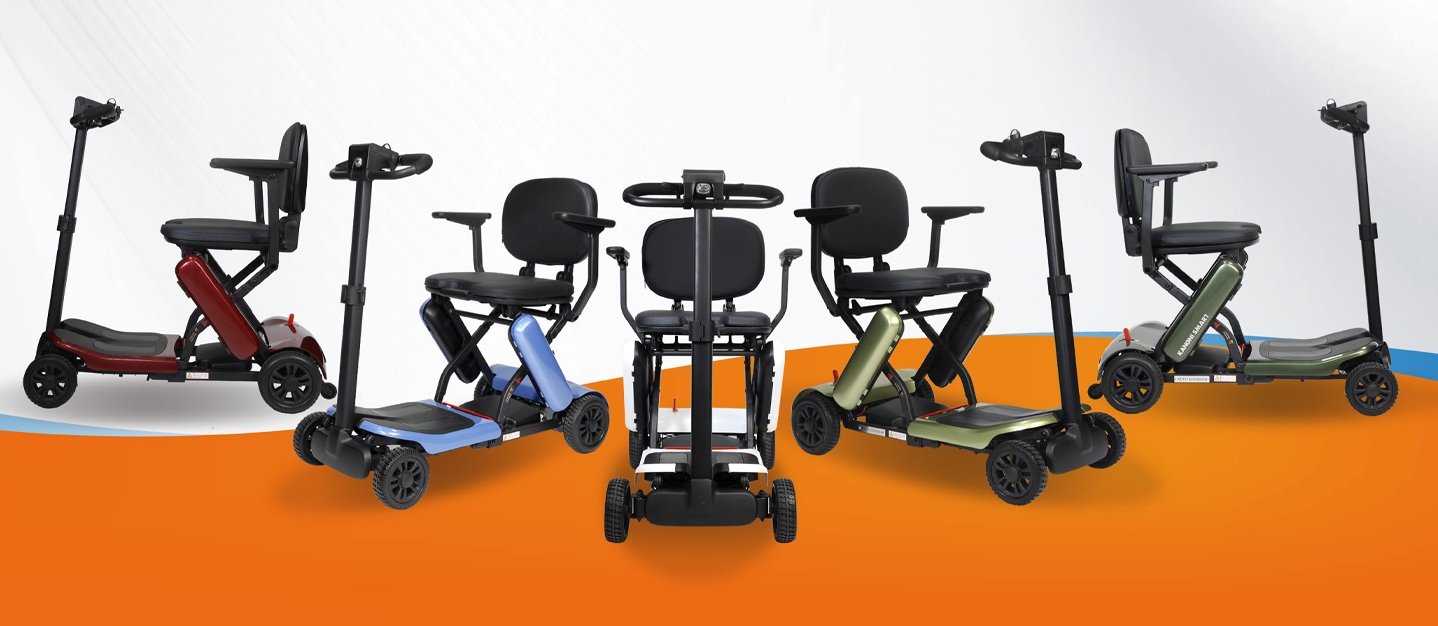

Finding the right motorised scooter isn’t just about getting from point A to B—it’s about matching the device to your daily life, environment, and comfort needs. With so many models on the market, it’s easy to feel overwhelmed. But by focusing on these key factors, you can narrow down your options and find a scooter that fits you perfectly.
Start by mapping your typical routes. If you’ll mostly use the scooter inside—navigating tight hallways, doorways, or small stores—prioritize a compact 3-wheel model. These turn sharply (some with a 24-inch radius) and fit through standard 30-inch doorways, though you’ll want to measure your home’s narrowest spots first (add 2 inches for hinge clearance!).
For outdoor use—sidewalks, parks, or neighborhood trips—a 4 wheeled mobility scooter is sturdier. Look for larger wheels (12+ inches) with pneumatic (air-filled) tires to smooth out bumps, and check ground clearance: 3+ inches avoids getting stuck on curbs or gravel. If you mix indoor and outdoor use, a mid-size four wheel scooter with adjustable settings (like smaller front casters for tight turns) strikes a balance.
A electric motorised scooter that doesn’t fit you will feel like a chore to use. Test the seat height: your feet should rest flat on the footrest, knees bent at 90 degrees, and your back should touch the seat without slouching. Taller users may prefer 3-wheel models—their open design offers more legroom—while heavier users (over 250 lbs) need 4 wheel electric scooter with wider wheelbases for stability.Kangni Smart’s four-wheeled mobility scooter uses seam welding technology to ensure that the welds are uniform and consistent throughout, thus making the entire structure of the product stronger and more load-bearing. It also reduces the risk of breakage.
Don’t skip the test drive! Visit a dealer to try models: reach for the tiller—shoulder-height, no straining—and check if the seat cushion supports your lower back during a 10-minute ride.
Standard T-shaped tillers work well if you have steady hands—they use levers that require constant pressure to move (release to brake). But if grip strength is an issue, opt for a delta tiller: its curved design lets you control speed with either hand, using gentle pushes instead of firm grips. Some models even offer joystick controls for users with limited arm movement—ask about customization.
If you travel by car, plane, or public transit, portability is non-negotiable. Foldable scooters collapse into trunk-sized pieces (under 30 lbs each), while travel models disassemble into 5–6 parts (check the heaviest piece—can you or a caregiver lift it?).
For larger vehicles or home use, full-sized scooters skip portability for durability—but measure your storage space first! A 4-foot-wide scooter won’t fit in a closet, so plan for a garage or dedicated corner.
Living in a hilly neighborhood? The“maximum incline”rating (6–12 degrees) tells you if a scooter can handle your driveway or local ramps. Travel scooters top out at 6–8 degrees (good for gentle slopes), while heavy-duty models tackle 10–12 degrees (steeper driveways). Test this in person—some dealers have ramps to simulate real-world hills.
If you’ll use the electric mobility scooter for 2+ hours daily, a captain’s seat (padded, contoured, and often swiveling) is worth the investment. It reduces pressure on your hips and lower back. For short trips (grocery runs, doctor’s visits), a basic padded seat on a portable scooter is fine—just avoid hard plastic, which gets uncomfortable fast.
Most electric scooter for mobility hit 6–13 km/h, but faster isn’t always better. Indoor use rarely needs more than 6–8 km/h (to avoid collisions), while outdoor users might appreciate 10+ km/h for longer distances. Remember: 3-wheel scooters can feel tippier at high speeds, so stick to 8 km/h on turns.
The best rated mobility scooter adapts to your life—not the other way around. By focusing on where you’ll use it, how you’ll ride, and what makes you comfortable, you’ll find a mobility partner that keeps up with your days. Test, compare, and don’t settle—your independence depends on it.
Copyright@ 2025 Nanjing Kangni Smart Technology Co., Ltd. All Right Reserved.